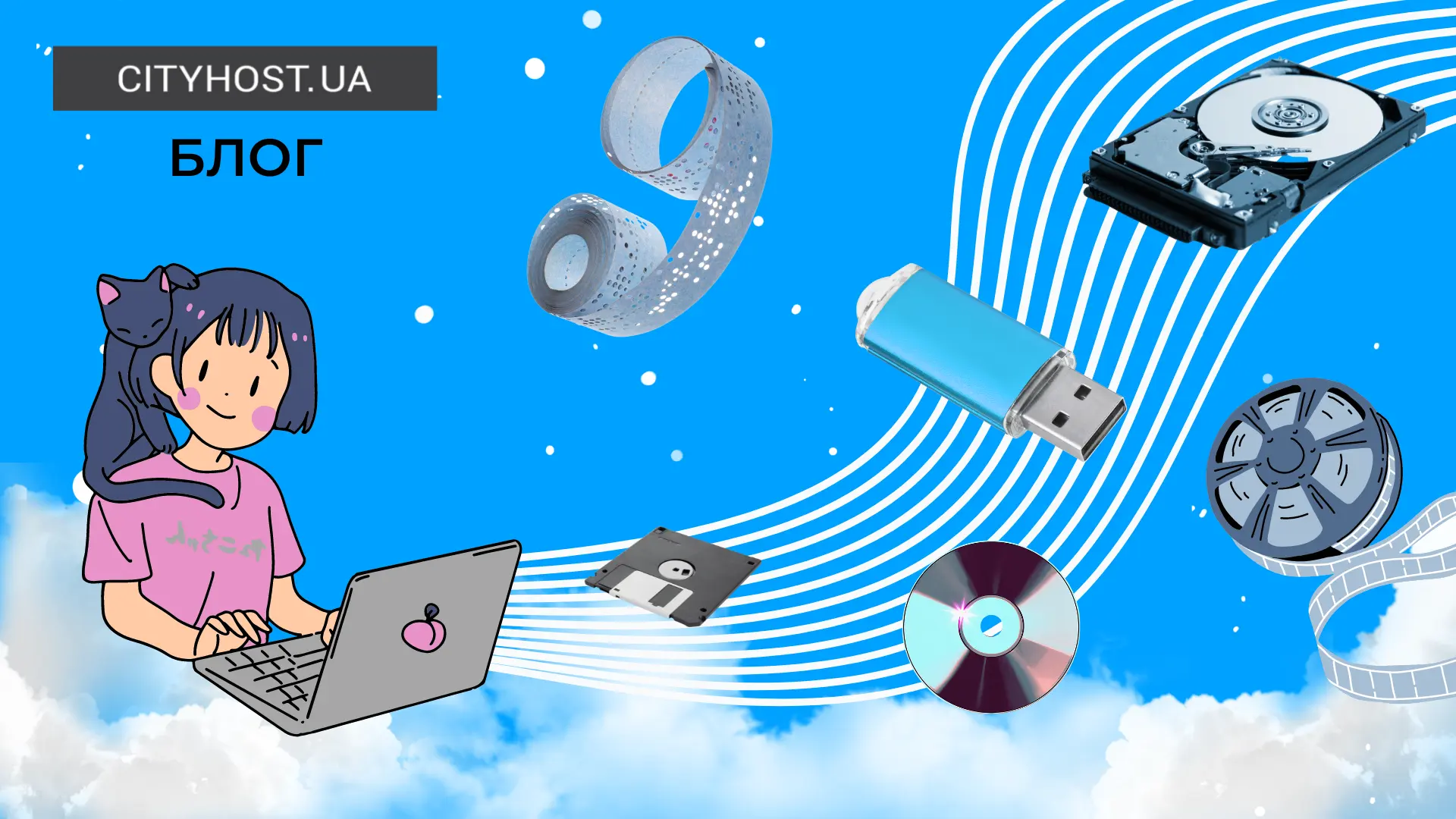
We are now witnessing one of the stages in the history of the development of digital media: the latest SSDs have entered the market - energy-efficient drives without moving parts. Today, they compete with conventional HDDs with a hard disk and a magnetic head for reading data.
This is just one of the milestones in the evolution of information carriers, which actually began several hundred years ago. Today we will consider all the key inventions that paved the way to modern computers and servers , the ability to store information and exchange it.
Binary number system
Before talking about carriers, let's remember the history of what they actually carry. All the information we receive via the Internet, stored in computers and smartphones, is encoded in two numbers located in a certain order - 1 and 0. Unlike the usual decimal, here the value of the number depends on its position among the surrounding symbols. Therefore, this system belongs to the so-called positional systems.
Modern advanced technologies are based on a mathematical system that was established even before the beginning of the new calendar. The origins of the binary number system can be found in ancient India - around the 3rd century BC, a scientist named Pingala created a system somewhat similar to Morse code, where the meaning of the message is encoded in long and short signals.
Similar searches are followed in China in the form of hexagrams. The rules of their formation were described in the 11th century by the Chinese scientist Shao Yun. However, it was not yet a binary system in the modern sense, but only attempts to use two characters (a short and a long dash) to encode information. This method echoes the depiction of numbers in the I Ching text, created in ancient China around the 13th century BC. The author used a straight line for odd numbers, and a broken line for even numbers.
But the official date of appearance of the binary code is considered to be the 17th century, when Gottfried Leibniz invented binary arithmetic — the simplest among all possible ones, because the system operates with only two values, two states. He did not advise replacing the usual decimal system with it, but emphasized that his discovery has great potential for use in science.
In those days, the invention really did not find practical use, and it was mentioned only in the 1930s, when the first computing machines based on this system were developed.
Read also: " How the Internet changed the world: TOP-10 usual things and phenomena that could not exist ".
Punch card — from the church to the computer
A punched card is the first information medium on which the binary numbering system is used. Digital media now uses 1's and 0's, but back then it was just the presence or absence of a hole somewhere on the line.
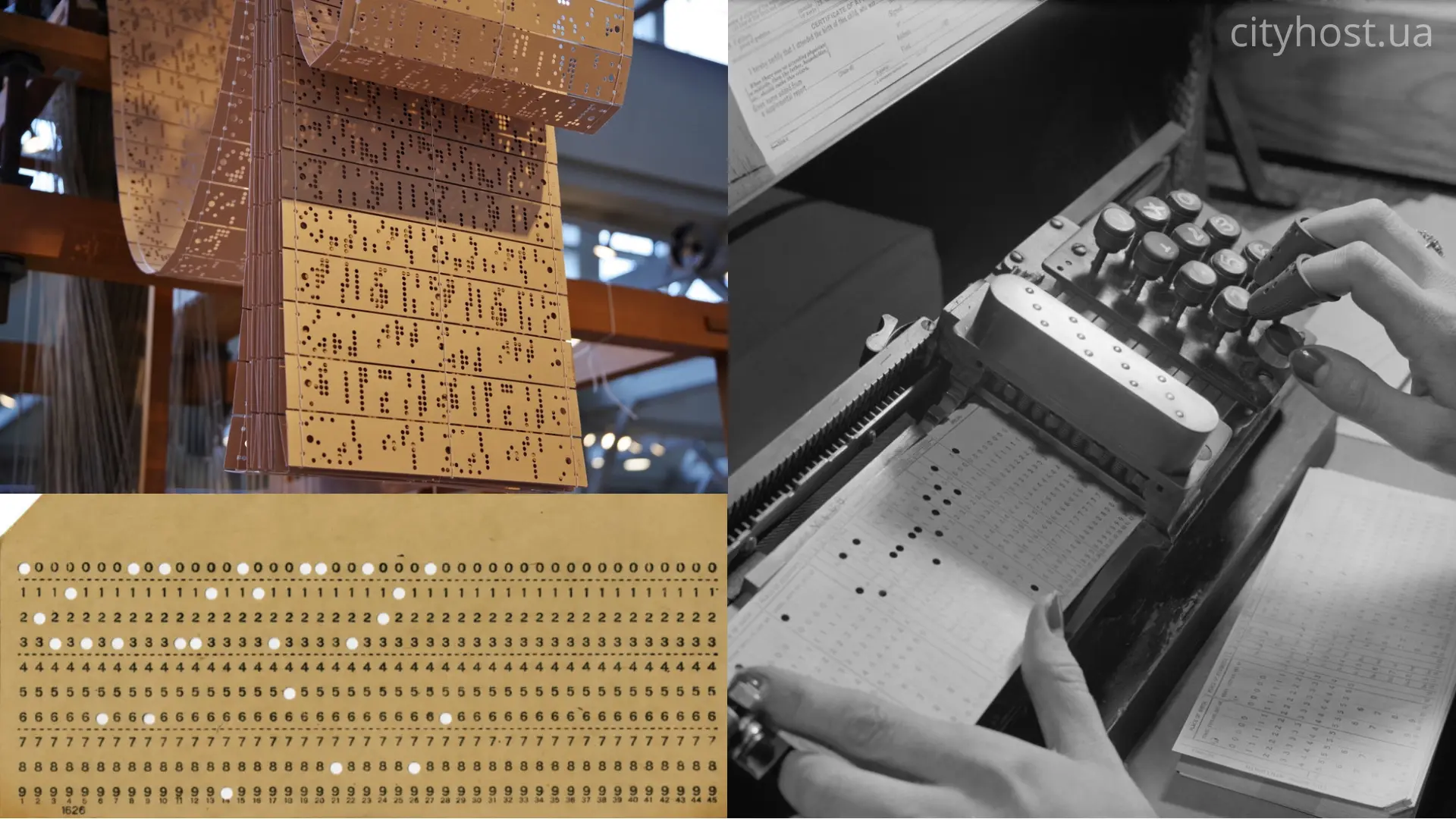
Paper punch card invented in 1884
The idea of punched cards originated in the 14th century and was used to control numerous church bells, on which entire musical works were played. There were many bells, all of them were different, and it was difficult to manage them. To facilitate the process, special punch drums were invented: levers were attached to special teeth on them, and they moved a certain bell at a programmed time. Later, music boxes and accordions worked on the same principle.
This idea was then used in other industries — for example, in weaving and knitting.
Paper punched cards were invented in 1884 by the American engineer Herman Hollerit - it was in this year that the patent "The Art of Compiling Statistical Data" was registered. He developed a machine-readable card system, and this technology was used in the 1890 US census.4
In the 20th century, it was one of the main methods of storing digital information, used in the first electronic computing machines of IBM. This is how the history of computers began.
Punched tape
Punched tape was born from the idea of combining several punched cards into one. Then they began to be printed on paper tapes, thereby making the flow of information continuous. There were attempts to print punched tapes on plastic, but it was more expensive, so the material was not widely distributed.
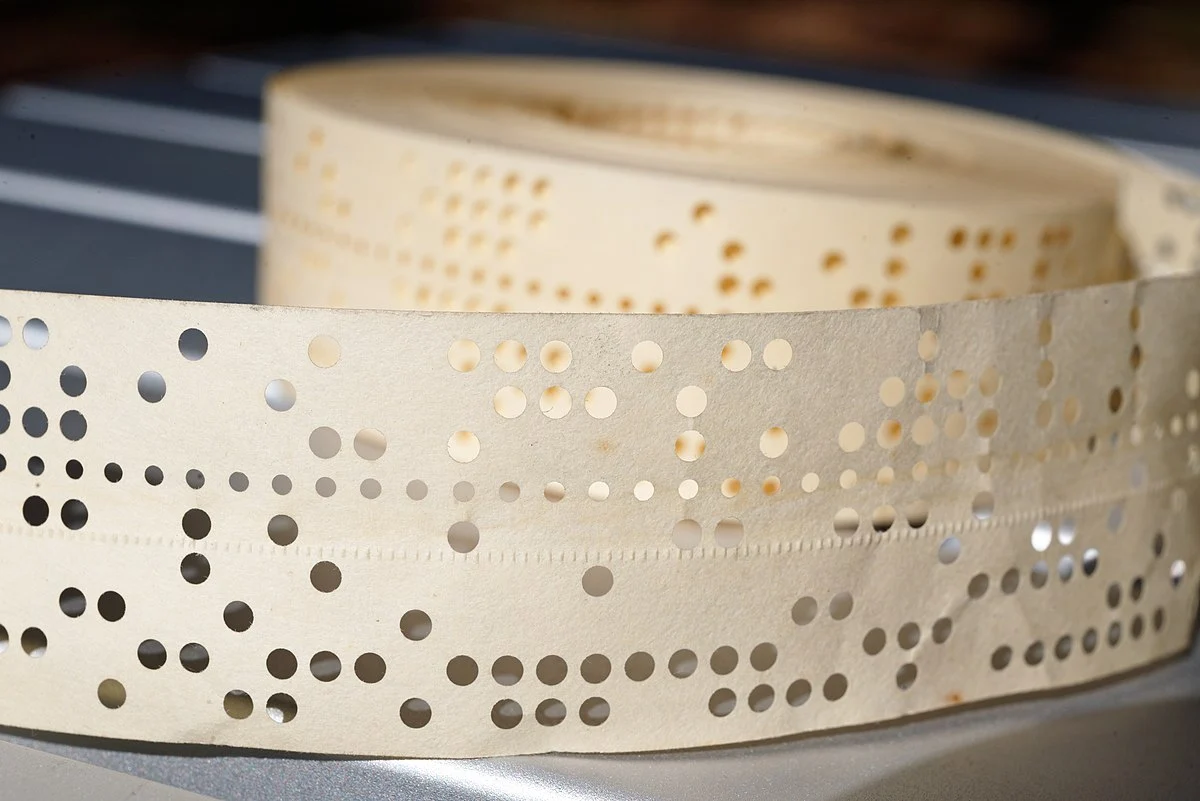
Paper punch tape
Such tapes were actively used in many areas:
-
Telegraphic communication;
-
Teletype;
-
Transmission of cryptographic keys (encrypted information);
-
CNC machine programming;
-
Cash registers.
Punched tapes were actively used until the 1990s, now they have been completely replaced by more modern media.
Magnetic drum
A device for storing information that was common in computers of the 1950s and 1960s. Computers that used such drives were called "drum computers".
Technically, it was a cylinder covered in ferromagnetic material that rotated rapidly, and several magnetic heads read information, each on its own track.
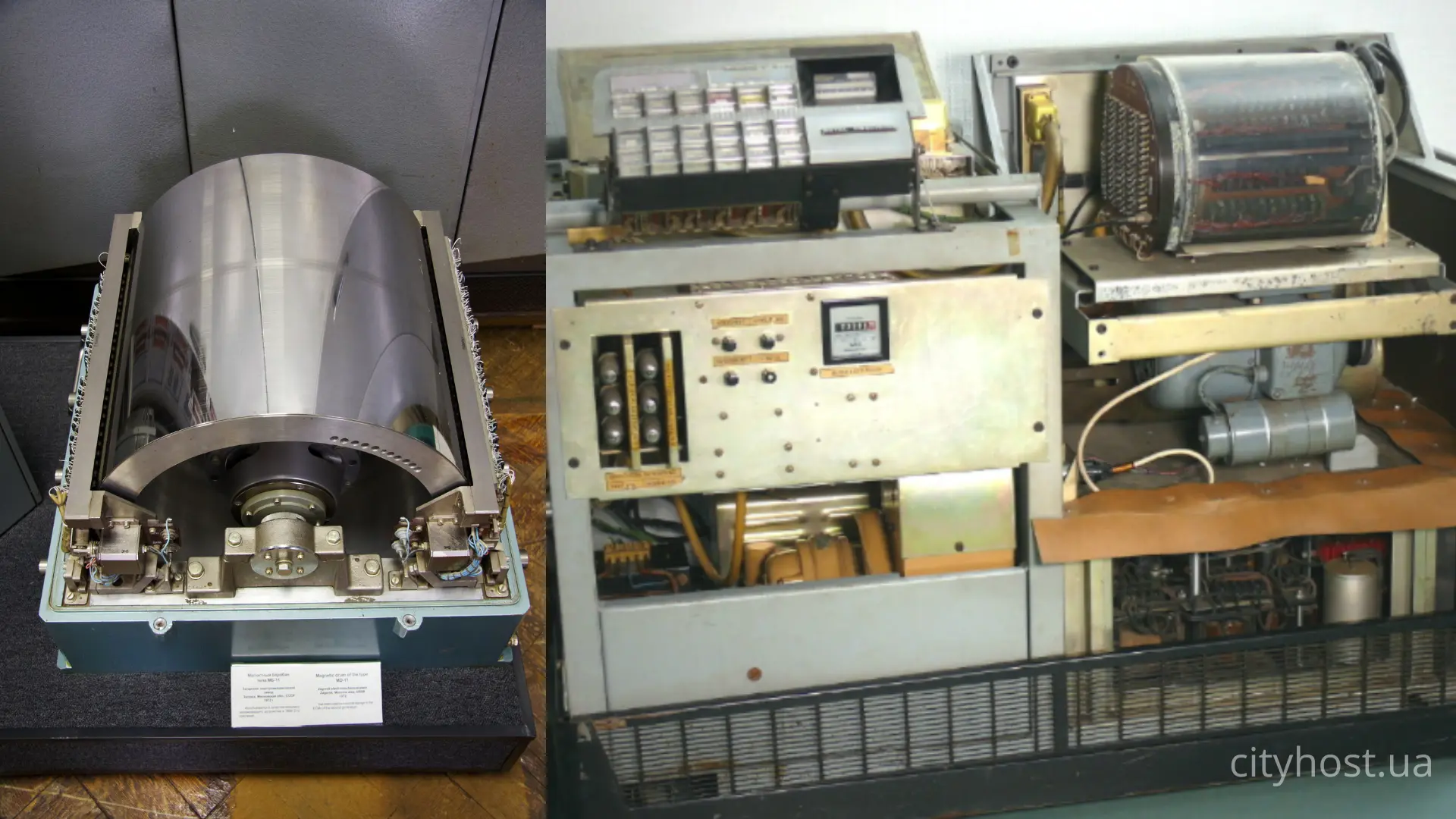
On the right is a computer in which a magnetic drum is installed as a medium
The magnetic drum was invented in 1932 by the Austrian Gustav Tauschek and contained only 62 and a half kilobytes of information.
In addition to information storage, such drums were also used for operational purposes — data processing and program storage. Therefore, a magnetic drum can be considered a prototype of RAM, RAM.
Magnetic tape
In 1928, magnetic tape was invented, which revolutionized sound recording and television in the second half of the 20th century. Many people remember how we used cassettes, and before that - reels, watched videos on VCRs. All this became possible thanks to magnetic tape.
It was also used in computer technology to record digital information. Its main advantage compared to previous media is a much higher capacity, the possibility of rewriting and multiple use, cheapness, longer data storage and compactness.
This technology was also used to record data for computers. More! Storage devices on magnetic tapes are experiencing a renaissance - they are used by data centers, cloud services and IT giants such as Google.
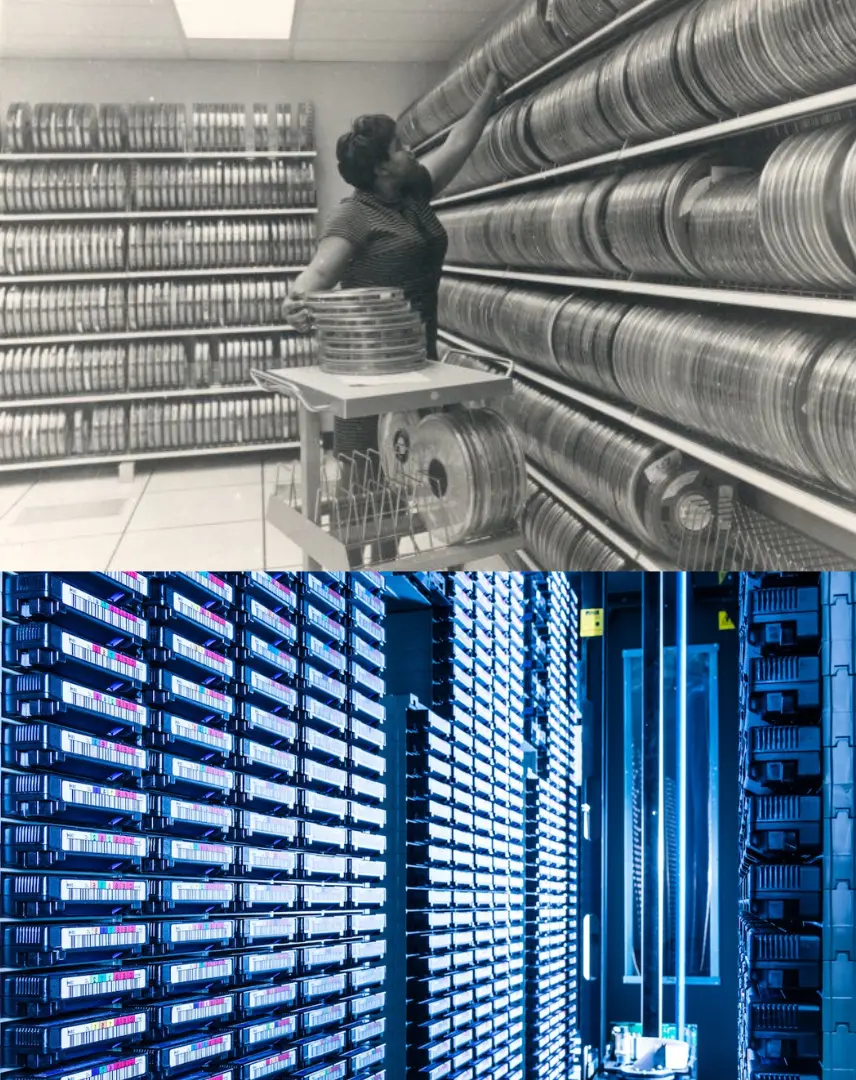
Magnetic tape libraries - then and now
In 2020, IBM and Fujifilm announced a joint release of a drive that provides a record capacity of 580 TB.
Diskettes
Diskette, flexible magnetic disk or floppy are the names of a new medium that was introduced by IBM in 1971. The very idea of recording information on floppy disks was proposed in 1967 by David Noble, one of the company's engineers.
The basis was a fragile disk covered with a ferromagnetic layer and protected by a plastic case. Diskettes allowed information to be rewritten multiple times and had a higher speed of writing and reading data than previous media.
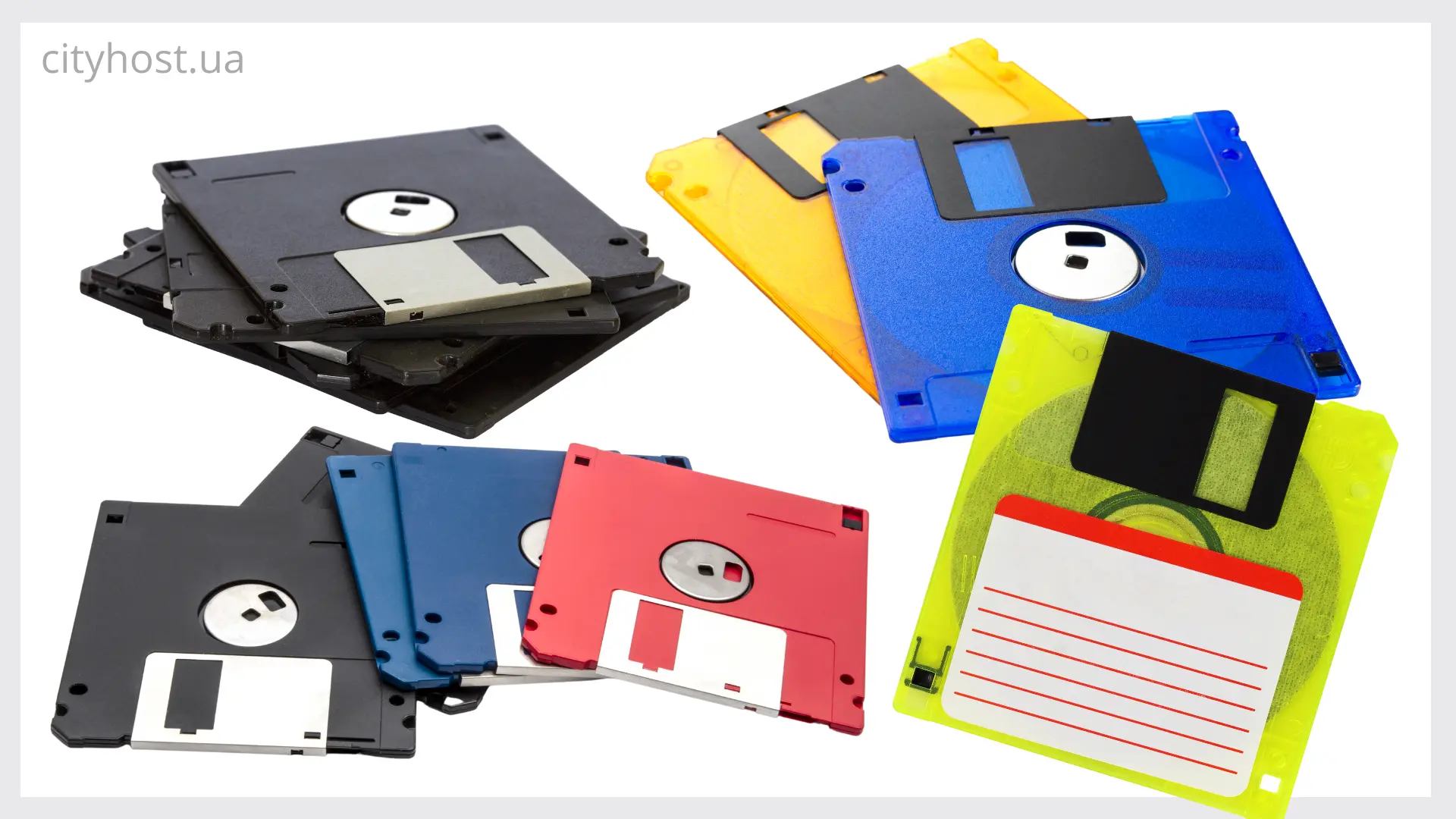
Diskettes
Floppy disks had interesting new features, such as write protection when the disk was read-only, and the ability to write a large file to multiple disks, creating a continuous session.
Floppy disks were common from the 1970s to the 1990s, after which they gave way to larger optical discs and flash drives.
Optical discs
The first optical disc appeared in Kyiv and was invented by Vyacheslav Petrov, a graduate student at the Institute of Cybernetics.
By the way, we published an article on the blog about the inventions of Ukrainians in the field of IT - from it you can learn how our compatriots changed the world of technology.
The first production was established jointly by Philips and MCA in the 1970s. Music CDs, CDs and DVDs for recording data can still be found today, although the presence of a CD-ROM drive is less and less common in modern computers.
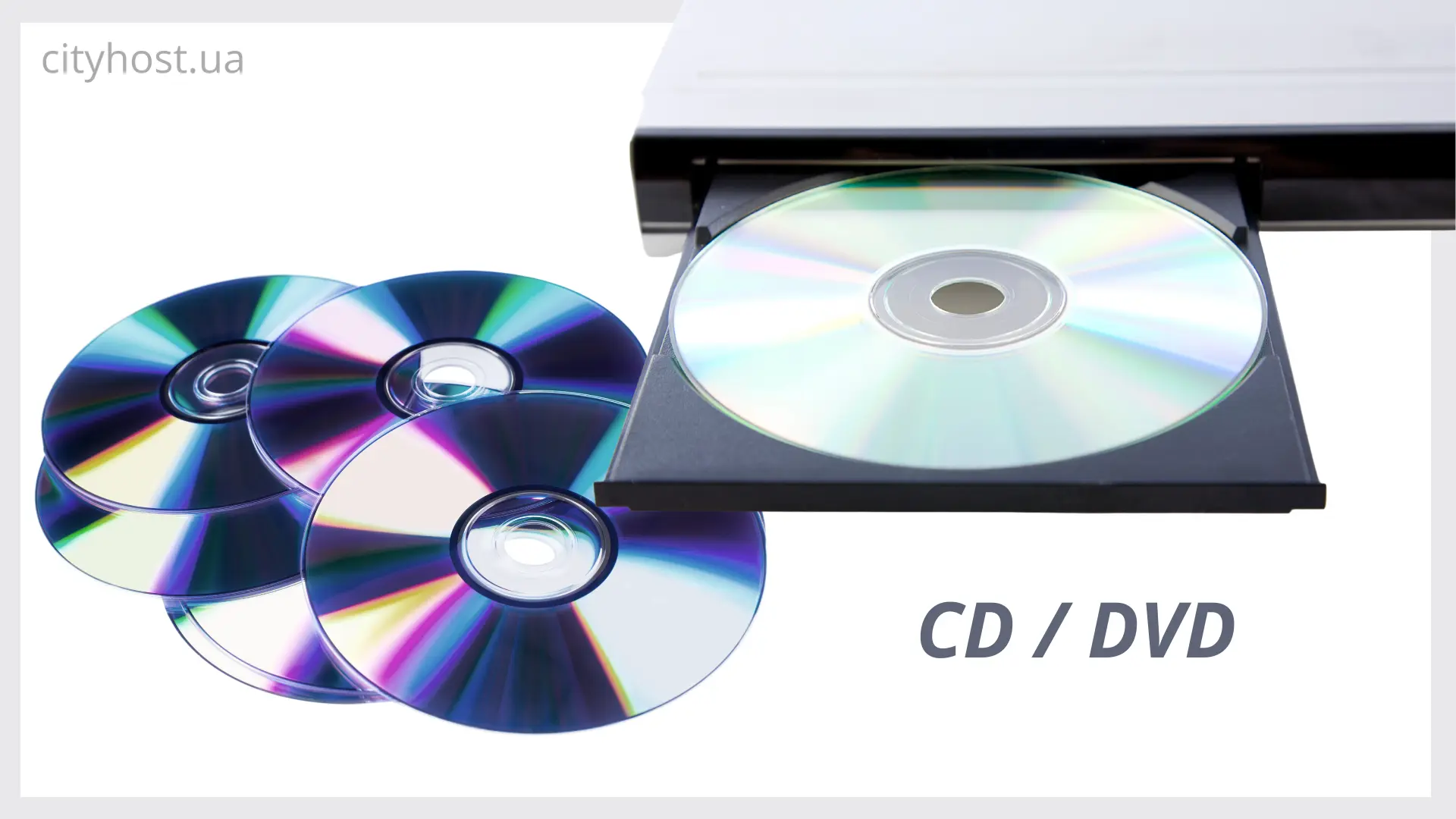
Optical discs and a player for them
The drive was a plastic or aluminum disk, the information from which was read using a laser. There were discs both with rewritable and non-rewritable discs. After the recording, the tracks formed in the form of grooves could be seen with the naked eye. That's why the process was called "cutting to a disk".
Flash drives
Flash drives or USB drives appeared in 1984 in Japan, and the familiar USB input standard was introduced in 1994-1996. These were carriers of a new generation, based not on the principles of magnetism, but on transistors.
Flash drives instantly took the crown from discs, as they were smaller in size, did not need storage boxes, and you could not be afraid of scratches with them. Their capacity was larger.
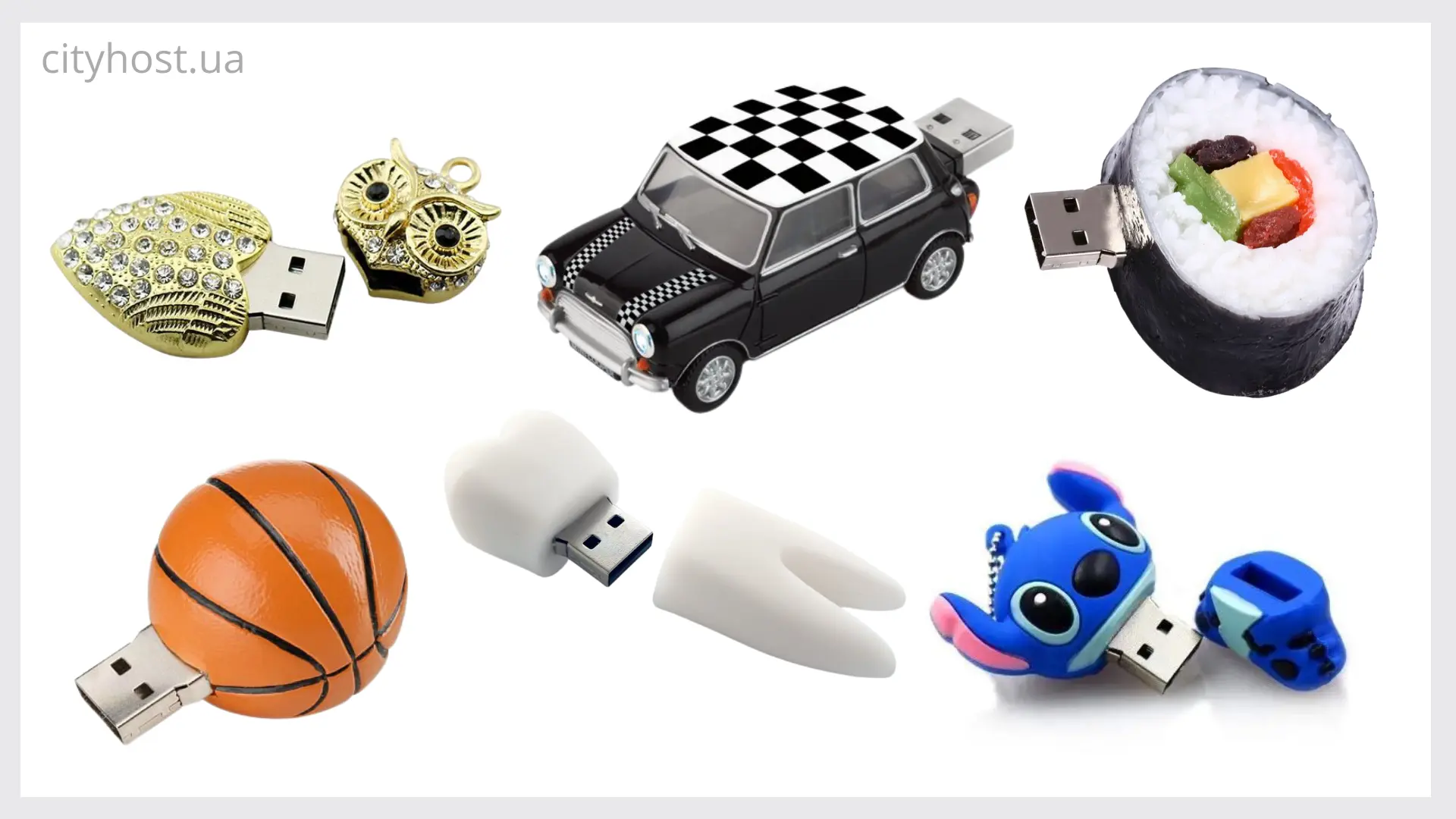
Unusual design of flash drives
However, USB flash drives also have their shortcomings. For example, they turned into mass peddlers of viruses that could be caught even by simply inserting a flash drive into someone else's computer. Thus, they provoked greater attention to security and accelerated the development of antivirus programs.
HDD and SSD drives
Let's go back in time and get away from portable media that used to transport data from computer to computer. In the field of PC development, separate processes took place in parallel. One of the important inventions was the hard disk or hard drive, which became an integral part of modern computers and servers.
Hard disks as such were created by IBM in 1956, and hard drives, which combined a disk and a head for reading and writing data in one box, were developed in 1973. The medium received the name "hard disk" due to the fact that, unlike its predecessors, which were made mostly of plastic, its disk part was made of metal.

Internal structure of HDD and SSD
It was such a huge breakthrough in the industry that HDD drives are still used today. At the beginning of the article, we mentioned that in recent years they have begun to be supplanted by SSD devices. The latest solid-state media were developed in 1978 in the USA. First, semiconductor storage devices based on dynamic memory appeared, on the basis of RAM - random access memory. And later, in 1995, media based on flash memory were developed. Yes, they work on the same principle as flash drives.
SSDs are faster, compact, quieter, and don't wear out so quickly. But they also have disadvantages compared to HDDs, which are much cheaper, fault-tolerant and have a greater number of rewriting cycles. Therefore, these two types of drives currently work in parallel.
Cloud storage
Cloud storage is a unique way of storing and processing data. A number of servers are combined into a common cloud space, from which each user is allocated a part of resources in the form of a virtual server or a hosting account.
"Clouds" allow you to easily and quickly scale the service, reduce and increase the number of consumed resources without unnecessary reconfiguration. Due to the fact that the servers duplicate each other's work, the possibility of data loss due to a failure on the provider's side is quite low.
Read also: " Business accounting in the cloud: worth it or not ."
We considered the main milestones in the development of digital media, traveled through years and centuries. Imagine how many things have happened in order for us to be able to read articles, write messages, and download apps. Many people worked on each of these discoveries, who contributed to the development of the digital society and went down in history.








